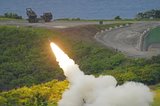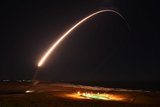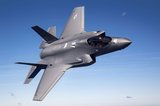NGG completes preliminary design reviews
The US Space Force (USSF) Space and Missile Systems Centre has completed preliminary design reviews of its Next Generation Overhead Persistent Infrared (OPIR) Geosynchronous Earth Orbiting (GEO) satellite programme, otherwise known as NGG.
The programme is developing two IR mission payloads as an effort to mitigate risks to the launch schedule for the first NGG satellite due to be launched in 2025.
Separate teams from Raytheon Space and Airborne Systems and Northrop Grumman (in partnership with Ball Aerospace) will each design, manufacture, assemble, integrate, test and deliver one mission payload to be included on the first two of three NGG satellites.
Col Dennis Bythewood, USSF programme executive officer for space development, said: ‘NGG is a critical piece of our missile warning architecture that will deliver a capable, resilient and defensible missile warning system to counter determined adversaries.’
A contract was awarded to Lockheed Martin in August 2018 for the delivery of three NCG space vehicles.
More from Defence Notes
-
![How might European countries look to tackle drone incursions?]()
How might European countries look to tackle drone incursions?
Disruption of infrastructure in Europe, whether by cyberattack, physical damage to pipelines or uncrewed aerial vehicles flying over major airports, as has happened more recently, is on the rise. What is the most effective way of countering the aerial aspect of this not-so-open warfare?
-
![Taiwan approved for $11 billion weapon purchase from US]()
Taiwan approved for $11 billion weapon purchase from US
The US State Department’s approval of a multi-billion-dollar sale of weapons to Taiwan includes tactical mission networks equipment, uncrewed aerial systems, artillery rocket systems and self-propelled howitzers as well as anti-tank guided missiles.
-
![Ireland spells out $2.3 billion shopping list in five-year defence spending plan]()
Ireland spells out $2.3 billion shopping list in five-year defence spending plan
Ireland’s multi-annual investment in capital defence spending is set to rise from €300m in 2026 to €360m in 2029–2030 with major upgrades across land, air, maritime and cyber domains.
-
![Canada to deepen integration of multi-domain capabilities to strengthen its defences]()
Canada to deepen integration of multi-domain capabilities to strengthen its defences
The Canadian Department of National Defence has created new organisations to manage the procurement and integration of all-domain solutions and allocated US$258.33 million to strengthen production capacities.
-
![US National Security Strategy prioritises advanced military capabilities and national industry]()
US National Security Strategy prioritises advanced military capabilities and national industry
The 2025 NSS has emphasised investment in the US nuclear and air defence inventory and national industry, but it leaves multiple unanswered questions on how the White House will implement this approach.
-
![Canada set to look away from its neighbour and across the Atlantic for partners]()
Canada set to look away from its neighbour and across the Atlantic for partners
While non-EU UK struggles to join the Security Action for Europe initiative, which provides loans for defence programmes, Canada has become the first country outside Europe to get access – and did so for a nominal fee.

























